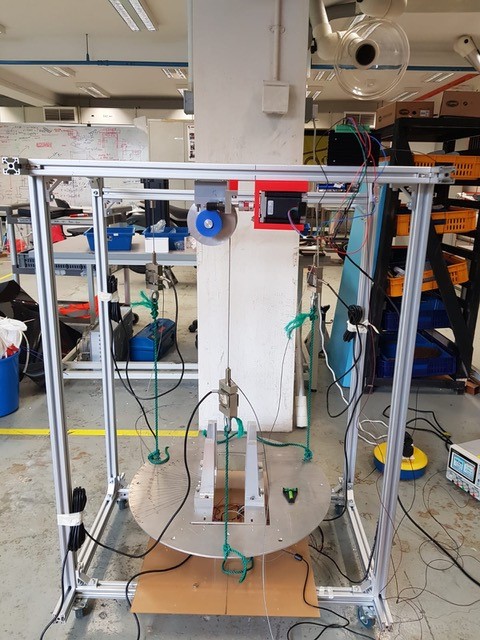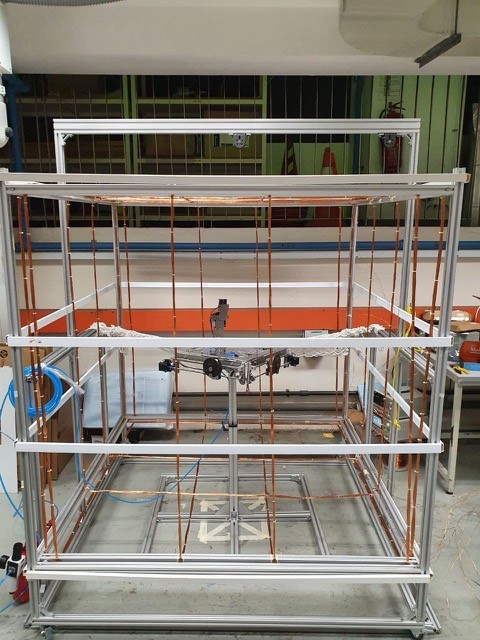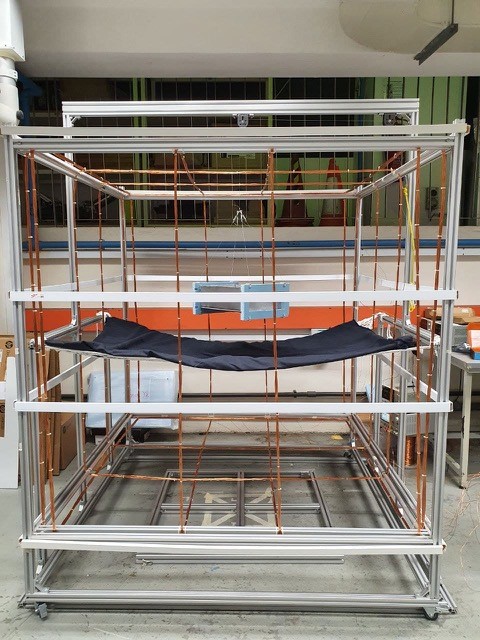Integrated CubeSat Testing System
Project Motivation
In recent years, CubeSats have gained prominence in space exploration, providing a cost-effective, viable platform for experimentation of satellite mission concepts. They are standardized nanosatellites that are made of small modular units that can be easily stored and transported into space within a deployment capsule.
With the developments in CubeSat technology, there is a greater desire for ground-based testing of satellites. This is because once satellites are launched into space, it is extremely difficult to test and reconfigure the system. However, testing of satellites requires the testing environment to simulate that of outer space.
In this project, we developed an integrated CubeSat testing system to perfectly simulate conditions in space such as weightlessness, magnetic field and mass properties measurement which include Moment of Inertia (MOI), Centre of Gravity (CG) and Mass to test the CubeSat and the Attitude Determination and Control System (ADCS), which is used for the stabilisation and rotation.
Design
The proposed design is a versatile ADCS test bed that can accommodate CubeSats ranging from sizes 1U to 6U. The integrated CubeSat testing system comprises a mass property measurement system, a microgravity simulator (both air bearing table and wire suspension system), and a magnetic field simulator.
The mass property measurement uses a trifilar suspension subsystem which includes a platform and load cells suspended by three strings to conduct mass, MOI and CG measurements. It also has a tilting subsystem which enables tilting of the platform to enable CG measurement along the vertical axis.

The air bearing table and the wire suspension system are both used to simulate zero-gravity test conditions about different degrees of freedom for the testing of the ADCS and the CubeSat. The air bearing table uses 3 independent linear actuators powered by stepper motors to make small adjustments in its CG to balance the system in order to achieve weightlessness. The wire suspension system suspends the CubeSat freely about a monofilament nylon line attached to an aluminium frame, mounted through a series of XPS foam and aluminium turnbuckles in order to balance the system. Each system complements the other in their functionality for varying use cases.


The magnetic field simulator is able to provide a uniform magnetic field for CubeSats of up to 6U in Low Earth Orbit using a Merritt coil. The use of the Merritt coil would both allow a large volume of magnetic field to be generated, as well as high uniformity.
Overall, the ADCS testbed is able to cater to CubeSats across a wide range of sizes of 1U-6U, was able to increase the efficiency of testing by more than 30 minutes while reducing the overall product cost to a fraction of the cost of a commercial testbed.

Project Team
Students:
- Hong Wei Xun (Mechanical Engineering, Class of 2021)
- La Wunn Htet Aung (Mechanical Engineering, Class of 2021)
- Seow Jing Ye (Mechanical Engineering, Class of 2021)
- Tan Ying Ying (Mechanical Engineering, Class of 2021)
Supervisors:
- Luo Sha (eleluos@nus.edu.sg)
- Soh Eng Keng (engsek@nus.edu.sg)
- Ee Wei Han, Eugene (engewhe@nus.edu.sg)

